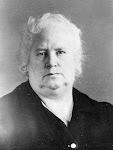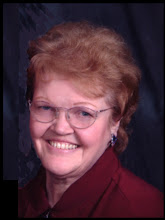Recently, I read a book review that had an electrifying effect on me. “Eyam? Don’t I have relatives that lived in Eyam? Eyam, the Plague Village? Did I have relatives who lived through that horrible onslaught of death in that tiny village?” I therefore set out to find out if our relatives lived during that time, and to find out more about the courage of the village people.
The following is taken from a book review, “Books that Hook” by Katie Chamberlain.
Book Reviewed: Year of Wonders by Geraldine Brooks
“The Bubonic Plague. Known as the Black Death, it decimated the population of Europe in the 1300s by nearly 40%, killing between 75 and 100 million people. The pestilence arose again while London was at war in 1665, and within a year had killed 15% of the population .”
“That year of upheaval and mayhem could hardly be called “a year of wonders,” yet that is exactly what poet John Dryden named it. (John Dryden was born August 9, 1631 in Aldwinkle near Ouncle, Northamptonshire, England. He was a historical poet, putting historical events into lengthy rhyme.) Taking inspiration from this seemingly ill-fitting title, Geraldine Brooks retells the story of the courage and sacrifice of the villagers of Eyam, a small town in Derbyshire.”
“Eyam or “Plague Village,” as it is still known, was isolated from the London plague until a tailor ordered a shipment of fabric from London. The fabric arrived infested by fleas, and within days had killed the tailor and spread the plague throughout the village. The villagers soon recognized the danger of the disease and chose – at the exhortation of their local pastor, William Mompesson-to quarantine themselves from surrounding villages and thus prevent the spread of disease. “
Below are the family group sheets of two families that lived during the dreadful plague in Eyam during 1665 and 1666. The surnames are the Gregory’s and Bennisons. It is known that a Martha Gregory died during the plague. No Bennisons are mentioned in the death records. The Gregorys, Chapmans, Robinsons and Bennisons are prominent families mentioned in the Parish Registers throughout the next three hundred hears. These families are some of direct ancestors on our pedigree.
LOCATED IN EYAM DEATH RECORD
75 GREGORY, Margaret S 21APR1666 IG plague victim
Some online searches, and reading of four books in the Family History Library (listed at the end of this article) prompted me to create the following timeline and history of the plague in Eyam. 252 people died of the plague in 1665 and 1666 in a village the size of which has been listed in several different sources as 294 (probable) to 350 people (possible). Also included are pictures appropriate to this information. This information was not taken from the book in the review above, as the book is considered historical fiction.
VERSE
The dead are everywhere!
The mountainside; the plain; the woods profound;
All the lone dells – the fertile and the fair,
Is one vast burial ground.” Mary Howitt
EYAM PLAGUE TIMELINE
DATE
 1662 Thomas Stanley, rector of Eyam had fallen victim to church politics which were affecting all of England, his Puritan beliefs meant he had been replaced as Eyam’s clergyman by the traditionalist, Shoreland Adams.
1662 Thomas Stanley, rector of Eyam had fallen victim to church politics which were affecting all of England, his Puritan beliefs meant he had been replaced as Eyam’s clergyman by the traditionalist, Shoreland Adams. The Book of Common Prayer introduced in England. More completely known as the Book of Common Prayer and Administration of the Sacraments of the rites of the Church according to the Use of the Church of England (the Anglican Church), this book caused a lot of division amongst the various religious beliefs in England.
1664 Rector William Mompesson receives a living (paid ministry) in Eyam, moving there with wife Catharine Carr Mompesson and two small children . When the plague was first recognized, Mompesson sent his children away, and encouraged his wife to go with them. However, she chose to stay with Mompesson and forfeited her life in August 1666 to the disease.
Following Shoreland Adams’ death in 1664 (see above), Reverend Stanley made his home in the village where he proved to be a popular preacher. Stanley’s Puritan beliefs contrasted strongly with Mompesson’s faith in the Unified Anglican Church.
1665 The Plague ravaged London with one in sixth of the population dying.
 Plague House
Plague House1665, end Aug Material and clothing were delivered from London to a (traveling) tailor, George Viccars who was living with Mary Cooper in what is now known as Plague Cottage in Eyam. As the disease was discovered to be ‘the plague’,the cause was explained in religious and supernatural terms, rather than medical terms.
6 Sep George Viccars died.
7 Sep Viccars funeral.
 22 Sep Edward Cooper, young son of Mary Cooper died. (His brother Jonathan died in October. Only Mary Cooper of that household escaped.
22 Sep Edward Cooper, young son of Mary Cooper died. (His brother Jonathan died in October. Only Mary Cooper of that household escaped.23 Sep Peter Hawksworth in a family who lived next door to the Coopers died.
26 Sep Thomas Thorpe , Mrs. Cooper’s neighbor on the other side, died.
30 Sep Wife of Thomas Thorpe died, and Sarah Sydall who lived across the street from Mary Cooper died. Plague House
1665 Oct 23 Deaths in Eyam
1665 Nov 7 deaths
1665 Dec 9 deaths
1666 Jan 5 deaths
1666 Feb 8 deaths
1666 Mar 6 deaths
1666 April 9 deaths
1666 May 4 deaths ( 2 not plague) All but Mrs. Sydall of 8, and all 7 Thorpes had died. Often whole families were stricken, with other whole families untouched. It was hoped that May was bringing the end of the spread of the disease.
May or June In modern times, it would seem that villagers would have left in droves as soon as the plague appeared. However, there was no where to go and they couldn’t leave their only means of livelihood.. There was no where they would be accepted, travel was difficult and expensive so there were few real alternatives to staying in the village. More than one person is known to have camped out away from the village in the fields or on the moor to escape death. As only the affluent could leave, only a few families left in 1665 before the worst of the onslaught.
The Squire, who might have been a man responsible to make decisions for the villagers, lived away from the village. He did help the villagers by providing supplies at drop off points, very carefully chosen so as not to spread the “seed of disease” back to those who conveyed the supplies.
Mompesson and Stanley, the two religious leaders, realizing what the future could bring, met to work out a plan to keep the disease from spreading. Mompesson is often given the greater credit, but it took both men working together to institute the plan. The plan comprised of three decisions:
1. No more organized funerals and churchyard burials would take place. People were requested to bury their own dead in their gardens and orchards or fields. This decision eliminated gatherings of people, time taken from the care of the sick for funerals, and the efficient and fast burial that would hopefully slow the spread of the disease.
2. It was agreed, for the above reasons, that the church should be locked until the epidemic was over, and that services should be held in the open air. Because people didn’t know how the disease was spread, it was assumed that a distance of 12 feel was the minimal safe distance of exposure. Because people still wanted to congregate for religious purposes, Mompesson preached in a natural amphitheater known as the Delph.
3. The greatest decision was to impose a ‘cordon sanitaire’ around the village in an attempt to prevent the spread of the disease beyond its boundaries. If the disease had traveled to the nearby towns, the results would have been appalling. The villagers gave their word not to flee. Many will ask why they did such a thing, and to that there seems only one answer. They were Christian people with a deep conviction, and surely Mompesson and Stanley convinced them that “Greater love hath no man that this, that he lay down his life for his friends.” Some of the boundary stones can still be seen in Eyam. There is no doubt that the quarantine was effective in Eyam, as there were no deaths outside the parish.
1666 June The disease began to reach its peak of destruction. 20 deaths
1666 July 56 deaths
1666 Aug This was the worst month with an average of more than 2 deaths a day. 78 Deaths.
Aug 25 Catherine Mompesson, wife of the reverend Mompesson died on the 25th of August and was actually buried in the churchyard (near their home) in spite of the above decision, where there is still a tomb for her remembrance.
Aug 26 The wife of Marshall Howe (the gravedigger/burial man) died. Marshall Howe was immune to the disease because of past exposure, and therefore took on the responsibility of burying the dead, especially when there was no one else to do it. Often, his payment was taken from the empty homes as he buried the last member of the family. His treatment of the bodies was inappropriate. It is thought that he paid for his gain with the death of his beloved wife and son.
Aug 31 Mompesson wrote a touching and sad letter to his children about their mother’s death
1666 Sep 24 deaths
1 Sep Mompesson’s wrote another grief stricken letter to friend and sponsor and patron, George Saville, when he thought himself dying from leg infection, exhaustion and depression. Mompesson never contracted the plague. Stanley also escaped the plague and died a few years later.
1666 Oct 14 Deaths
1666 Winter & 1667 Summer
This was the time of the great burning. Almost all personal belongings of anyone in the village was burned.
1705 Reverend Hunt completely copied the Parish registers of Eyam, including plague years. This assured the passage of much of the information of those times.
What continues to defy real explanation is why plague, which had been around not only in England, but in the rest of Europe for over 300 years disappeared after 1666. From that date, there was no major outbreak in England. It had virtually disappeared by 1700.
BIBLIOGRAPHY OF BOOKS FROM FH LIBRARY
1. The History and Antiquities of Eyam with a Minute Account of the Thread Plague, which desolated that village in the year 1666 by William Wood
2. Eyam Plague 1665-1666 by John G. Clifford; pub 1989
3. The Plague in Eyam, 1665 by Kristi Palmer; pub 1982
4. A Guide to Eyam with a History of the Church and Account of the Plague by Clarence Daniel
.jpg)
.jpg)




